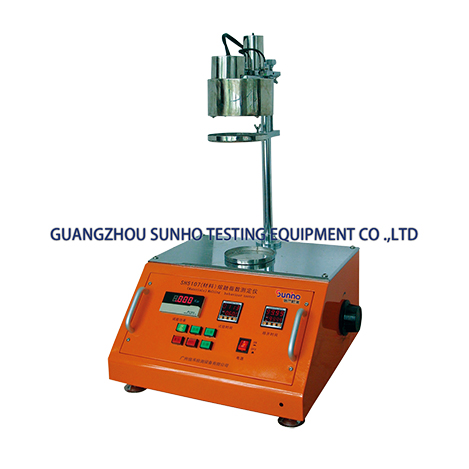What we are talking about when we talk about melt drop testing
Melt-drop testing is an experimental method of evaluating the performance of materials at high temperatures, especially when looking at their resistance to molten metals or plastics. This type of testing is commonly used in the development of safety apparel and equipment, such as protective clothing for firefighters, protective gear for industrial workers, and housing materials for electronics. When we talk about melt-drop testing, we're really talking about a material's protective properties, heat resistance and reliability under extreme conditions.
The basic principle of the melt-drop test is that a quantity of molten material (such as metal or plastic) is dropped from a specific height onto the surface of the test material. The performance of the material can be assessed by observing and recording the reaction of the material, such as whether it burns, melts, perforates or forms a charred layer. Parameters tested include the temperature of the melt, the height of the drop, the number of drops, and the thickness of the material.

In the laboratory, the experimental procedure for melt-drop testing is a precise and standardised process designed to ensure repeatability and reliability of test results. The following are typical melt-drop test steps:
I. Preparation of test samples: Firstly, a series of material samples with dimensions and thicknesses that meet the test criteria need to be prepared. These samples should be representative of the material actually in use and should be dry and clean prior to testing.
II. Preheating the molten material: The selected molten material is heated to a specified temperature. This usually involves the use of a specific furnace or heating device to ensure that the temperature of the molten substance is uniform and stable.
III. Performing drops: Using standardised equipment, such as a melt drop tester, the molten substance is dropped from a specified height onto a test sample placed below. The quantity, frequency and pattern of drops shall be according to the test standard.
IV. Observation and Recording: Observe the reaction of the sample as the molten substance drips onto the sample. Record whether the sample appears to burn, melt, perforate or char. Also, use a thermal imaging camera or other measuring device to record temperature changes on the surface and within the sample.

VI. Data analysis: The data collected needs to be analysed to assess the performance of the material. This may include comparing differences in performance between samples of different materials or thicknesses.
Report Preparation: Finally, the test results and analyses are compiled into a report that describes in detail the testing process, the phenomena observed, the results of the data analysis, and the final conclusions.
Through these standardised test steps, melt-drop testing provides a reliable basis for evaluating the performance of materials under extreme conditions. This information is critical to the design and manufacture of safety equipment that provides effective protection.
This Melt Drop Tester (SH5107) is designed and manufactured in accordance with the requirements of BS2782-7, ISO1133 and ASTMD1238. The physical analysis of polymer polymer materials in the melting state, under a certain temperature to detect the melting state of the test specimen.

2、The sample tray net, through the aperture of 2.1mm;.
3、Sample bracket distance from the heat radiator is 30mm.
4、The test specimen is: 70mm * 70mm, thickness less than 13mm, the weight of the specimen is less than 2g.
5、The configuration of the fume cupboard. According to the standard requirements, the wind speed is less than 0.2m/s.
6、The test is placed in the fume cupboard, the volume is at least 0.5m³. (Optional)
7、The radiation surface is made of heat-resistant and transparent quartz glass with a diameter of 100±5mm.
8、Equipment bracket, melt receiving vessel and other high-grade stainless steel materials. The inner diameter of melt receiving vessel is 118mm, depth is 12mm.
9、Supporting test control system, digital display test time, radiation temperature.
10、It is recommended that optional thermal radiation meter.
In addition, the melt drop test can also help manufacturers to improve the formulation of materials and develop new materials that are more resistant to high temperature and thermal shock. This not only improves user safety, but also promotes the advancement of materials science and engineering technology.
In short, when we talk about melt-drop testing, we are looking at the ability of materials to protect and perform at extreme temperatures. This test is important for ensuring the safety of personnel and advancing materials technology.


